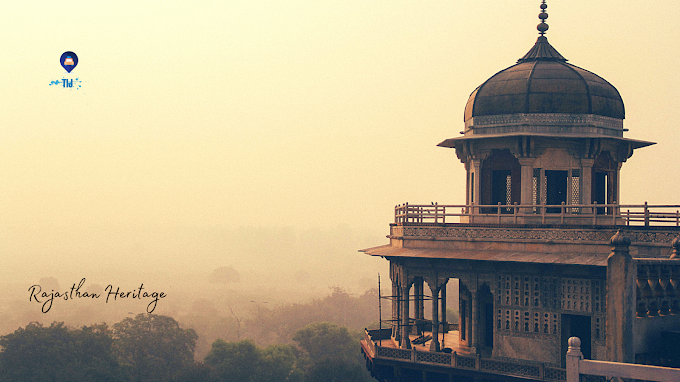Jaisalmer Fort | History | Rajasthan
Jaisalmer Fort
Jaisalmer Fort, nestled at the golden sands of Thar Desert, isn't only a fortress however a mini-metropolis with homes, temples, stores, and restaurants. A UNESCO World Heritage Site, it falls beneath the class of 'Hill Forts of India'. Built-in 1156, Jaisalmer Fort gets its name from the previous Bhati Rajput ruler Rao Jaisal. More than 3 thousand humans stay inside the castle walls with a couple of entrance gates at the direction up pinnacle, the closing of which directs you to the popular public square named Dashera Chowk. The citadel stands at an impressive top of 250 ft. And is surrounded via 30 toes. Tall partitions. Owing to its altitude, it offers a stunning and panoramic view of Jaisalmer town draped in golden yellow!
One of the most important forts in the world, Jaisalmer Fort is placed on the southern fringe of the town and is popularly called 'Sonar Qila' or 'Golden Fort'. It is a big structure showing its aesthetic splendor. The stroll through the labyrinthine lanes is an experience worth having. Jaisalmer Fort changed into first of all named 'Trikut Garh' since it was triangular in shape and become additionally built over the Trikuta Hills. 'Sonar Qila'(Golden Fort) as it's far locally mentioned, houses nearly zone of Jaisalmer's populace within the complicated.
Want to Fort and More Places in Jaisalmer then Cab Service in Jaisalmer are Here to Guide you. We have many more Service Taxi service in Jaisalmer and Car Rental in Jaisalmer.
Some Facts
Jaisalmer Fort changed into prophesized by Krishna: Jaisal, the Rajput king who constructed this beautiful fortress once met a sage, Eesul who advised the king to construct a castle at the Trikuta Hill saying that he was a Krishna had prophesized that a Yaduvanshi descendant might set up his state on that very hill.
The fortress blends each, Muslim and Rajput styles of structure: Built-in 1156 CE, the castle was in the fingers of many Hindu and Muslim kings who contributed to its architecture.
At dawn, the massive yellow partitions of the citadel are camouflaged by means of the golden rays of the solar making it invisible against the view of the full-size yellow desert. This became used by the kings to store the citadel from their enemies.
The fort is likewise known as 'Sonar Quila'. The yellow sand dunes surrounding the castle, create a perfect atmosphere for desert safari, camel rides in addition to a jeep safari. The cascading sand of the wasteland creates a phantasm of ripples making sand surfing very thrilling.
It's the handiest 'dwelling castle' in India. People live inside the premises of the fort and shops are installation for industrial functions. It also has lodges and an age-antique haveli in its enclosing.
The fortress has three layers of walls-The first wall had solid stone blocks to strengthen the foundation, the second wall runs around everything of the citadel and serves as a protecting barrier and the 1/3 wall became used by the squaddies to throw large boulders and pour boiling oil or water on the enemies, who might frequently get caught between the second and 0.33 wall.
Restoration | Jaisalmer Fort | Rajasthan
For the past two decades, the sandstone blocks of the Jaisalmer Fort have began to shift and disintegrate and the visitor increase has made the trouble even worse. Water seepage, deficient civic amenities and the seismic sports in and around the Trikuta hill are some of the primary reasons impacting the conditions of the Fort. The fort houses around 2,000 human beings making it India's final "living citadel". It is built over a weak sedimentary rock foothill which makes it very susceptible and fragile, specially to seepage and this has additionally caused the crumble of many portions of the fortress consisting of the Queen's Palace (Rani ka Mahal) and elements of the outer boundary.
The Worlds Monument Fund has undertaken the recovery work of the fortress.
Stay tuned And Stay Safe.






0 Comments